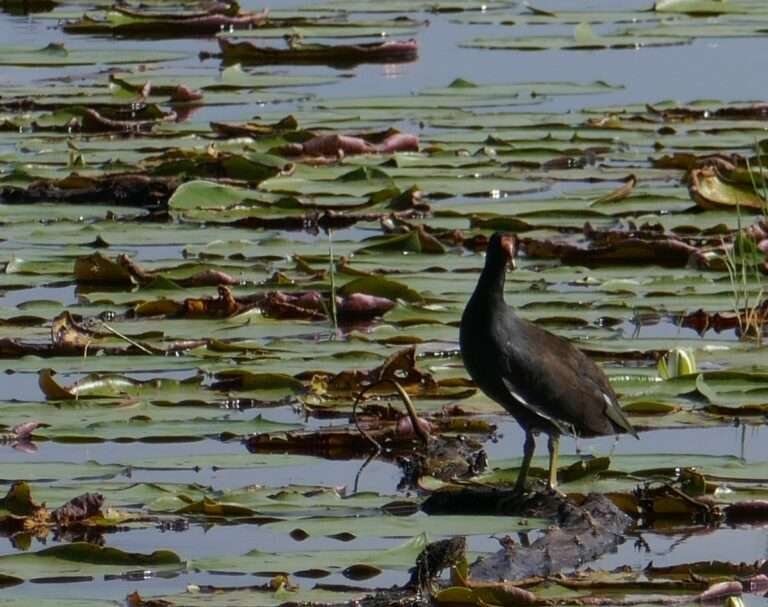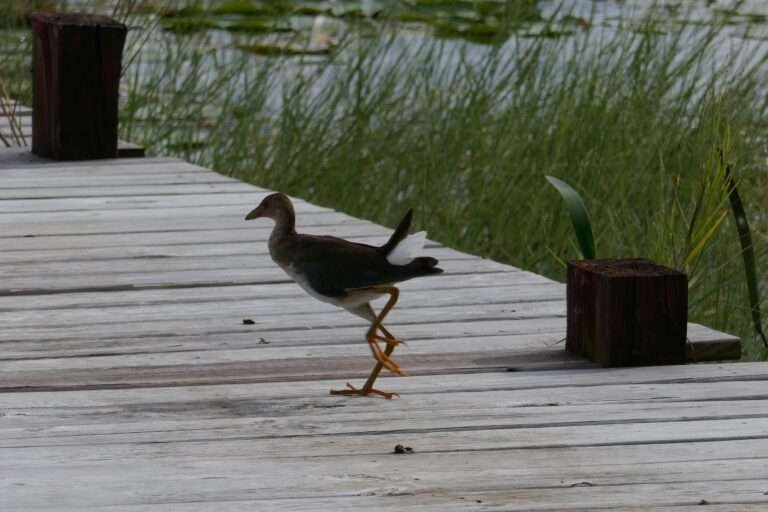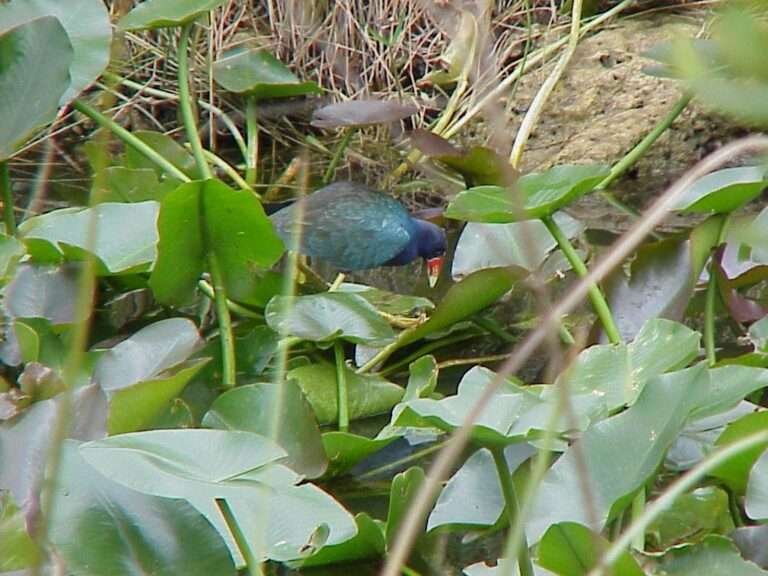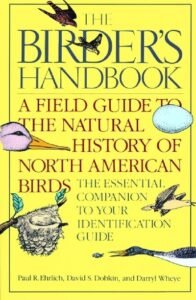
Purple Gallinule
(Porphyrio martinicus)

Description
Purple gallinule adults are extremely colorful waterbirds. They are about a foot in length. They have long legs and very large feet.
Their lower bodies are a deep violet-purple with a green-bronze sheen on their upper bodies. Their bills are bright red with a yellow tip and a turquoise shield that covers their foreheads.
Their tail tips up conspicuously with a large patch of white feathers showing. These feathers are called tail covert feathers – they cover and conceal the bases of the bird’s tail feathers.
The young are a buff brown in color with yellowish bills. The young do have the conspicuous patch of white tail feathers and long gangly yellow-orange legs and feet.
Scientific Name & Family
The Latin name for the purple gallinule is Porphyrio martinicus.
Purple gallinules are in the rail, or Rallidae, family of birds.
Common Name
They are sometimes called the yellow legged gallinule.

Behavior
They can be secretive, but are conspicuous if they have a relatively safe feeding ground. They travel across the aquatic vegetation in a crisscross pattern searching for food.
They have a funny habit of picking up lily pad leaves and checking underneath for food items which makes them very entertaining to watch.
They also use the plants at the waters edge to search of food, and nesting material while nesting.

Habitat
The purple gallinule uses freshwater swamps, lakes, ponds marshes and wet roadside ditches as their habitat. They prefer areas with dense floating vegetation and slow moving or still waters.
Range
They are native waterbirds and in Central Florida they are year-round residents. They can be found in S. Carolina, Georgia, Florida, Arkansas, Louisiana, Mississippi, Alabama, Texas and Oklahoma. They are also found in Central and South America, and the West Indies.
Food
They are omnivores and eat a wide variety of plant and animal material. They eat seeds, fruit and leaves of plants (both aquatic and terrestrial), insects, frogs, worms, and fish. Necropsies show they also consume eggs and the young of other marsh birds. [1] They scour the floating vegetation for food and can often be seen lifting up water lily leaves to check underneath for aquatic bugs or dragonfly nymphs. Their small size along with the long legs and large feet give them the perfect buoyancy, and construction, to use aquatic vegetation as highways across the water for foraging.
They also feed on land and in the water while searching for food. They will forage in shoreline shrubs and trees for food as well as swim in and around their territory in their search for food.
Plant food consists of windmillgrass (Chloris sp.), paspalum (Paspalum sp.), knotgrass (Paspalum distichum), duckweed (Lemna sp.), signalgrass (Urochloa sp.), burmuda grass, spikerush (Eleocharis sp.), sawgrass (Cladium sp.), panic-grass (Panicum sp.), giant cutgrass (Zizaniopsis miliacea), Indian rice (Zizania aquatica), and waterlily (Nymphaea sp.). [2]

Nesting & Young
Purple gallinules usually construct two nests. With the second one being about thirty feet from the first. They live in family groups, of up to fourteen individuals, and will move to the second nest once all of the young have hatched and the brood will use that as their home base with all family members contributing to feeding and protection of the group. Young from previous years will help to feed and defend young and their territory. [1]
Nests are generally built on floating islands of vegetation over 4′ – 10′ of water. They are constructed of aquatic vegetation and interwoven with leaves and anchoring plants. Soggy and wet below, dry above. … The eggs are about 1 1/2″ and are cinnamon-pink/buff, marked with brown. [1]
The 6 to 8 eggs are incubated for 22 – 25 days with the young being able to feed themselves upon hatching (precocial). The young are able to fly at 63 days. During this time there is much interactive care by every bird in the entire family unit.

References:
[1] Paul Ehrlich, et al.. The Birder’s Handbook: A Field Guide to the Natural History of North American Birds Paperback. Simon & Schuster. June 15, 1988.
[2] Alexander C. Martin, Herbert S. Zim, et al.. American Wildlife and Plants: A Guide To Wildlife Food Habits. Oct 5, 2011


